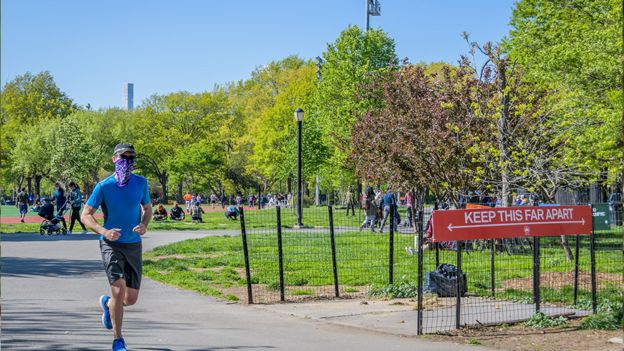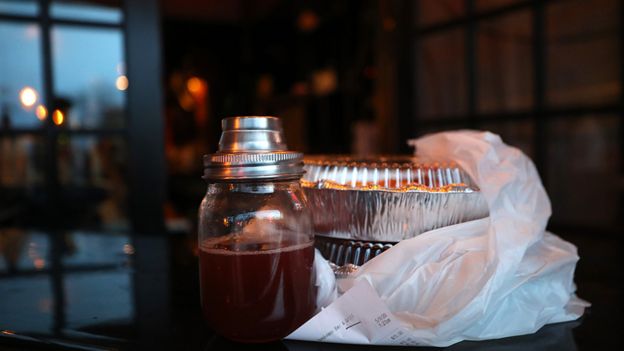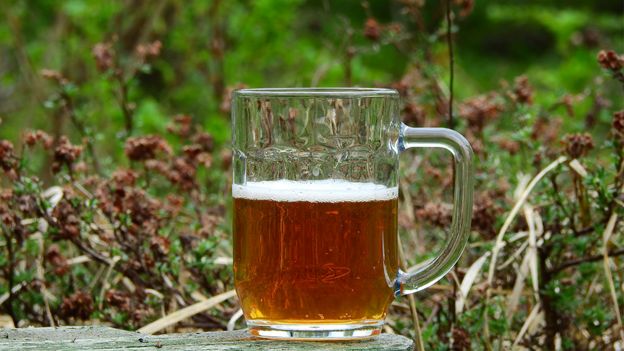The US coronavirus death toll climbed by 2,333 in the past 24 hours, a tally by Johns Hopkins University showed Tuesday, more than twice as many as the day before.
The Baltimore-based university said as of 8:30 pm (0030 GMT Wednesday) that the country had suffered a total of 71,022 deaths.
On Monday, the United States recorded its lowest daily balance in a month, with 1,015 fatalities.
President Donald Trump on Tuesday made his first major foray out of the White House since the coronavirus lockdown began, pushing for the US economy to reopen as Britain became the country with the second most deaths.
The growing US death toll is by far the highest globally, while Britain’s rose to 32,000, putting it above Italy in the grim ranking of national fatalities.
EUROPE
Elsewhere in Europe, hard-hit Italy, Spain and France have reported a levelling off of figures, offering hope that life could slowly start returning to normal.
With experts warning of a severe global recession, many governments have been easing stay-at-home measures in a bid to revive badly hammered economies.
Financial markets hinted at some light at the end of the tunnel, with stocks and oil prices rallying Tuesday.
“We can’t keep our country closed for the next five years,” Trump said on a trip to a mask-making factory in Arizona, conceding that some people would be “badly affected.”
He urged US states to ease restrictions as he attempts to fire up the world’s biggest economy before the November presidential election when the high death toll and millions of lost jobs could cost him dearly.
The US registered 2,333 more deaths over the 24-hours to Tuesday evening, according to a tally by Johns Hopkins University, with some scientific models suggesting the figure will rise to 3,000 a day by June.
NEED TO REVIVE
Countries are balancing the need to revive stalled economies against the risk of a new wave of deadly infections.
In Germany, regional leaders pushed back against Chancellor Angela Merkel’s pleas for caution, with the biggest state Bavaria saying it would reopen restaurants and hotels this month.
Hong Kong announced plans to reopen schools, cinemas, bars and beauty parlours from Friday, while Californian bookshops, florists and clothing stores will also be allowed to reopen at the end of the week.
Authorities also unveiled plans to hand out reusable face masks to all 7.5 million city residents.
“It’s better now that I’m waking up and doing something,” South African mechanic Milton Nkosi, 40, told AFP as he checked a new set of tyres at a garage in Johannesburg.
“I’m used to working,” he added. “It’s the first time in my life to stay home so many days.”
But the garage only called back four of its eight employees after being closed for five weeks and is only partially open — underlining the huge challenge to rebuild the global economy.
250,000 GRIM MILESTONE
At least 254,532 people have died of the novel coronavirus since the epidemic surfaced in China late last year, according to an AFP tally at 1900 GMT Tuesday based on official sources.
Russia cemented its place as the European country reporting the highest number of new infections as its total cases soared past 155,000.
Despite the increases, the Russian government has indicated it could gradually lift confinement measures from May 12.
The economic casualties have also piled up from the impact of the pandemic.
Spain added 280,000 people to its jobless ranks, while the Virgin Atlantic airline said it would have to fire one in three staff as the virus grounds planes worldwide.
Walt Disney said it expected an impact of some $1.4 billion in the current fiscal quarter as a result of a massive hit to its theme parks and other operations.
And home-sharing platform Airbnb announced it would slash one fourth of its workforce due to the collapse of the travel industry.
In India, police used batons to beat back crowds jostling to buy alcohol for the first time in 40 days as the world’s biggest lockdown eased.
The government in New Delhi credits its strict shutdown with keeping the official tally of COVID-19 deaths to 1,400 in a country with a population of 1.3 billion.
But the policy has resulted in misery for millions of workers in India’s vast informal sector left suddenly jobless.
India said Tuesday it had embarked on a “massive” operation calling up passenger jets and naval ships to bring back some of the hundreds of thousands of its nationals stuck abroad.
Evacuees will have to pay for their passage and spend 14 days in quarantine on arrival.
Polish voters were still in the dark on Tuesday as to whether their presidential election will go ahead as scheduled this weekend.
The right-wing Law and Justice (PiS) government is seeking parliamentary approval to conduct the election by postal ballot — despite widespread concern that it would not be fair, legal or safe.
In a ray of hope for the sports world, South Korea’s baseball players returned to action, albeit to empty stadiums.
Banners with photos of masked fans stretched across the bleachers at the Incheon-based SK Wyverns club’s Munhak Baseball Stadium.
Players have been asked not to shake hands or exchange high-fives, while spitting is prohibited.
Friday will also see the delayed start of the country’s football K-League.
Juventus players returned to individual training at the team’s sports centre in Turin on Tuesday, though star player Cristiano Ronaldo began two weeks’ quarantine after returning to Italy following two months of confinement on his native island of Madeira.
But in Britain, sports leaders warned of the “catastrophic” impact of the virus, with football, cricket and rugby counting the cost of delayed or cancelled tournaments and leagues.
Source:Â AFP




